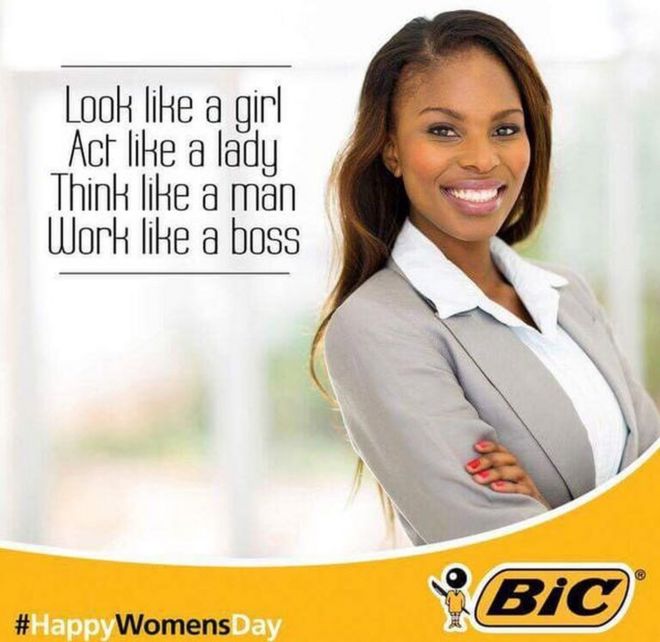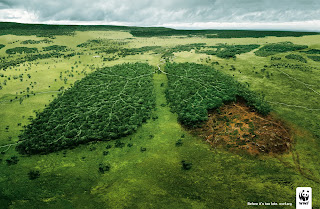Media Factsheet 03 - Genre: Categorising texts
1) What example is provided of why visual iconographies are so important?
Visuals of deep space are linked to the sci-fi genre and modern mise-en-scene combined with a person sitting behind a desk and high key lighting connote news broadcasts: so iconography helps identity genre.
2) What examples are provided of the importance of narrative in identifying genre?
Soap operas and sit coms have similar visual iconograpghies, characters and problems such as struggling with your boss at work, however the way the narrative progresses through how the characters deal with those problems would be different.
3) What is the difference between character representation in action movies and disaster movies?
Action heroes are isolated from other people, whereas disaster movies place the hero role on a group of people.
4) What are the different ways films can be categorised according to Bordwell?
Period or Country, e.g. US films of the 1930s
Director / Star, e.g. Ben Stiller Films
Technical Process, e.g. Animation
Style, e.g. German Expressionism;
Series, e.g. Bond;
Audience, e.g. Family Films
5) List three ways genre is used by audiences.
They use prior knowledge to decide if they will like the genre of not
They can compare the text to other texts of the same genre.
They can reject the media text according to the genre if they don't like it.
6) List three ways genre is used by institutions or producers.
Genres can have loyal fan base so it easier for them to attract an audience
Genres are paradigms or templates media producers can follow.
Its easier to market the media text to those who prefer the genre
7) What film genre is used as an example of how genres evolve? What films and conventions are mentioned?
The gangster genre. The sopranos, reservoir dogs and scarface were examples mentioned and a convention is a tommy gun hidden inside of a violin case - after a while it became cliche.
Media Factsheet 126 - Superheroes: A Genre Case Study
1) List five films the factsheet discusses with regards to the Superhero genre.
The X Men Franchise
The Avengers and its Franchise:Iron Man,Thor,The Hulk
Spider man
Guardian of the Galaxy
Agents of Shield
2) What examples are provided of how the Superhero genre has reflected the changing values, ideologies and world events of the last 70 years?
X Men (1, 2 and 3)
Wolverine (1 and 2)
Spider-Man (1, 2 and 3)
Batman, Batman Returns,
Batman Forever
Batman and Robin
3) How can Schatz's theory of genre cycles be applied to the Superhero genre?
Innovation: genre codes are first established. The first superhero comics establish the idea of a character with superpowers saving the world and fighting against villains. The presentation of the genre in moving picture are established when being adapted to tv and film.
Classical: codes and conventions are repeated in film.
Parody: 1966's Batman was intentionally camp and funny; the audience weren't meant to take the superhero seriously.
Deconstruction: 1978's Superman started a new cycle with technology leading the innovation with special effects and creating more realistic visuals.
My own genre analysis
Jojo's bizarre adventure


General
1) Why did you choose the text you are analysing?
It's my favourite TV series of all time. The series is very strange, constantly surprising you with what the mangaka gets away with. For example, if the author wants to show that a character is a bad person, he will have them kill a dog (This happens a lot...).
2) In what context did you encounter it?
I had been exposed to many memes online regarding it and had heard about it through friends. It's an old and very popular anime series and so, as I got into anime, I naturally became interested in it. The 5th part in the anime adaption was being animated and thus spawned more very popular clips that I came across and was very intrigued by.
3) What influence do you think this context might have had on your interpretation of the text?
I had seen a clip from the 5th part of the series which takes plays hundreds of years after the first part, and so the initial tone and pace of the series was much different from what I expected. However, through the often parodied nature of the series I assumed I would find it very memorable. The series is infamous for being referenced in many media, including anime and western cartoons, so I already vaguely knew of the somewhat comedic and bizarre narrative of the series.
4) To what genre did you initially assign the text?
Shonen; Action-adventure. Interestingly, the genre shifts between parts in the series, such as part 1 adapting a more Gothic-Victorian horror genre compared to the later parts. There is an inherent focus on the supernatural throughout the entire series, with the first main antagonist being a vampire to the ghostly beings that represents a character's soul (called a stand) that are introduced in the 3rd part of the series.
5) What is your experience of this genre?
I had watched anime such as soul eater and My hero academia, both shonen action series, previous to watching jojo. It's definitely one of my preferred genres along with comedy.
6) What subject matter and basic themes is the text concerned with?
Fighting against a main villain to either save the world or stop a corrupted gang leader, the themes vary throughout the parts. However, each part focuses on fate, good vs evil and supernatural forces.
7) How typical of the genre is this text in terms of content?
As Jojo could be considered a series that established some conventions of the shonen action genre, it's fairly typical. The amount of fighting and the presence of a main character and main villain in each part definitely fits the genre.
8) What expectations do you have about texts in this genre?
Fighting, power escalation, high stakes, a main villain and main hero, a rival character, and the sexualisation of female characters.
9) Have you found any formal generic labels for this particular text (where)?
By it's nature or being in shonen jump magazine, it's given the generic label of a shonen manga series. The offical website categorises it as adventure, fantasy and supernatural.
10) What generic labels have others given the same text?
Comedy (this series will definitely make you laugh), tragedy (this series will definitely make you cry)
11) Which conventions of the genre do you recognize in the text?
Fighting, superpowers, a main hero and main villain.
12) To what extent does this text stretch the conventions of its genre?
In part 4, for example, instead of taking place over many different locations around the world, takes place in a single town for the entire part. With less of a focus on adventure and more on mystery(as the main characters try to find out the identity of a serial killer while trying to live their normal lives) the mangaka challenges one of the focal genre's of the series.
13) Where and why does the text depart from the conventions of the genre?
Each part is a different story-arc focusing on a different main character (each related to each other) in a new location, with new themes, stakes and villains. The series, although always having fighting and action, strays from the adventure genre in some parts.
14) Which conventions seem more like those of a different genre (and which genre(s))?
The mangaka also likes to delve into the thriller/horror genres, drama, western, crime and mystery.
15) What familiar motifs or images are used?
The star is used as a representation of the main character's lineage - as they are all related through blood to each other - and bonds them together. This comes from the first protagonist's name being Joseph Joestar, and him having a star-shaped birth mark on his neck that each Jojo shares.
Mode of address
1) What sort of audience did you feel that the text was aimed at (and how typical was this of the genre)?
Teenage boys and young men. The magazine that Jojo was published in - Shonen jump - is a magazine targeted at teenage boys. However, in 2005 the magazine the manga is published in changed to ultra jump seinen magazine. This magazine was aimed more at young men than teenage boys.
2) How does the text address you?
Although i'm not within the target audience, many of the protagonists and characters are teenagers and so there is a way I can project myself onto them.
3) What sort of person does it assume you are?
A good person, as the main characters are fighting against an evil force in every part. It assumes you're smart, as it doesn't spoon feed you the plot. There are many mature themes in the show, such as murder, rape and crime, so it assumes you're mature.
4) What assumptions seem to be made about your class, age, gender and ethnicity?
The assumption is that the consumer is a Japanese teenage boy to young man. Almost all the main characters are male and incredibly buff, presenting a kind of power fantasy for the target audience. There are often fan service scenes where the female characters have their bodies flaunted. Although, especially later in the series, there are many strong female characters introduced and the main character for the 6th part is female. This perhaps shows an evolution in who the target audience is. Interestingly. since the beginning of the series there have been homo-erotic undertones and the male characters are all conventionally attractive, showing that the series has always been... inclusive in who it's targeted at.
5) What interests does it assume you have?
Action, fighting and battles.
The bizarre and the supernatural.
Relationships between friends, family and partners.
Death and tragedy.
Relationship to other texts
1) What intertextual references are there in the text you are analysing (and to what other texts)?
The mangaka, Araki, is a huge fan of western music. There are lots of characters named after western musicians and their music, (such as foo fighters, queen, jimi hendrix and many more) with certain characters being influenced aesthetically as well.
2) Generically, which other texts does the text you are analysing resemble most closely?
My hero academia and Fist of the north star
3) What key features are shared by these texts?
Fist of the north star's masculine character deigns and archetypes are very similar to jjba. The brutal and bizarre violence of the series also matches jjba's very creative action scenes. Fotns is illogical and fun, definitely matching the tone of jjba.
My hero academia is similar in the supernatural elements that both series share. The extent of creative superpowers and abilities match closely to jjba, where superpowers are common throughout the series.
4) What major differences do you notice between them?
Jjba changes the main protagonist each part, following the descendants of the first jojo. Fist of the north star's central protagonist fights many rivals throughout the series, however jjba has a focus on one villain for each part that the protagonist has to face at the end.
My hero academia's setting is completely different, as it stays within the bounds of Japan and the school that the characters attend.











